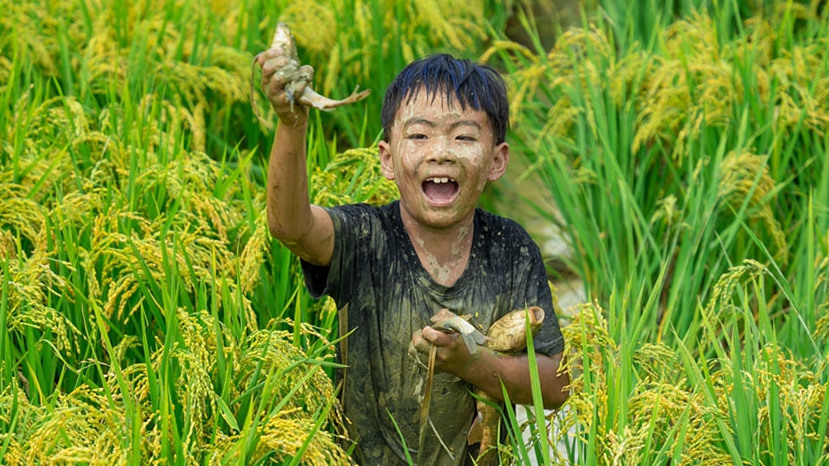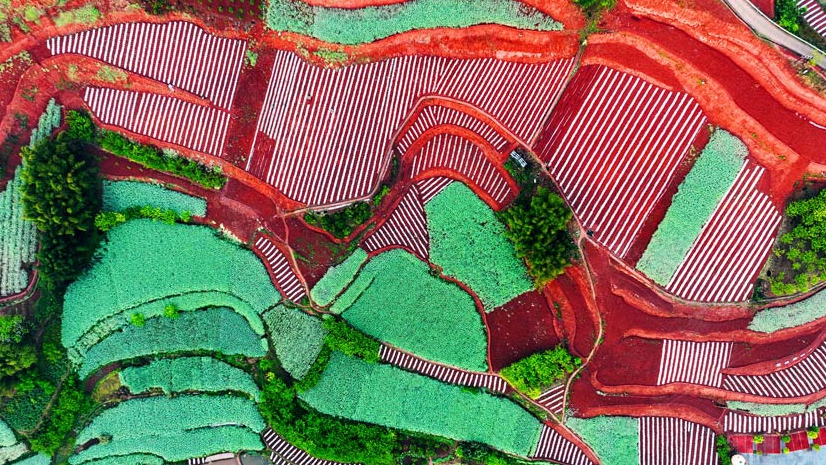Aerial view of Chinese Jasmine Garden in Hengzhou of S China’s Guangxi
Currently, farmers are busy harvesting jasmine flowers at the Chinese Jasmine Garden, which is also a popular scenic area, located in Shijing village, Hengzhou city, south China's Guangxi Zhuang Autonomous Region.
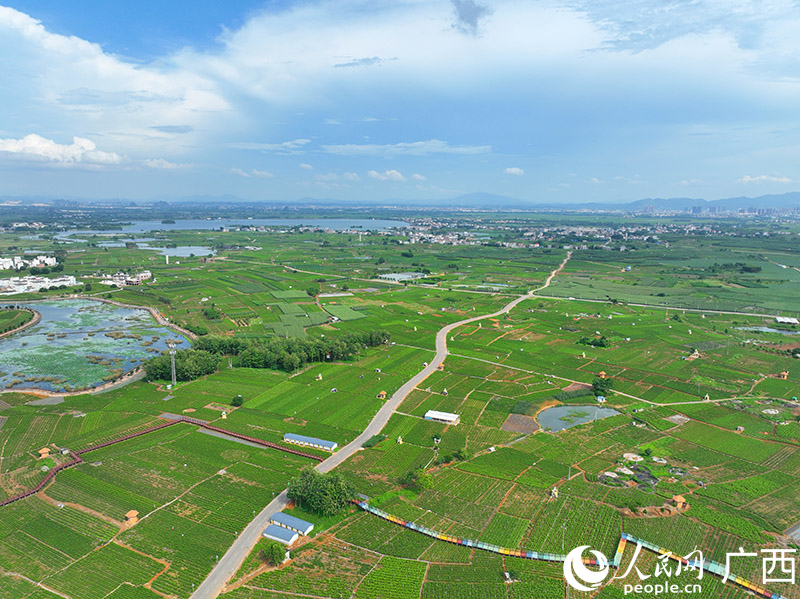
Aerial photo shows the Chinese Jasmine Garden, also a popular scenic area, located in Shijing village, Hengzhou city, south China's Guangxi Zhuang Autonomous Region. (People's Daily Online/Fu Huazhou)
Lei Shuiping is a local flower farmer who planted jasmine flowers on 4 mu (about 0.3 hectares) of land this year. Lei's annual profit for every mu of land can reach between 15,000 yuan (about $2,166) to 20,000 yuan.
"I can harvest 20 kilograms to 25 kilograms of jasmine flowers each day. My jasmine flowers can be sold at about 28 yuan to 30 yuan per kilogram in general and at a maximum of 44 yuan per kilogram," said Lei.
Hengzhou's output of jasmine flowers accounts for 80 percent of China's total output and 60 percent of the world's total.
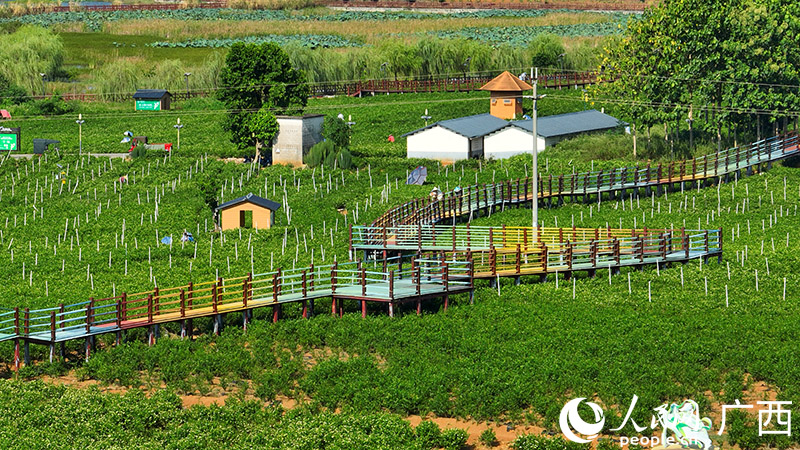
Photo shows a walkway at the Chinese Jasmine Garden, also a popular scenic area, located in Shijing village, Hengzhou city, south China's Guangxi Zhuang Autonomous Region. (People's Daily Online/Fu Huazhou)
In 2021, the city planted jasmine flowers on about 125,000 mu of land, generating a total output of 102,000 tonnes of fresh jasmine flowers and producing nearly 80,000 tonnes of jasmine tea.
Last year, the jasmine industry generated an annual revenue of 14.4 billion yuan for Hengzhou city, while the overall comprehensive brand value of the city's jasmine flowers and jasmine tea hit 21.5 billion yuan.
In recent years, Hengzhou has made new breakthroughs in the yield and quality of jasmine flowers thanks to the application of technologies.

Photo shows small houses situated in the jasmine flower fields. (People's Daily Online/Fu Huazhou)
"In the past, the yield was about 10 kilograms to 15 kilograms per mu. Technologies have increased the yield to 20 kilograms to 25 kilograms, extended the flowering season by about two months, and ensured better quality jasmine flowers," said Wei Yuquan, with the management center of a modern agricultural industrial park in Hengzhou.
Wei introduced that local governments have supported the development of the jasmine flower industry, and arranged regular technical training courses for flower farmers, which has brought new planting techniques and management methods to them.
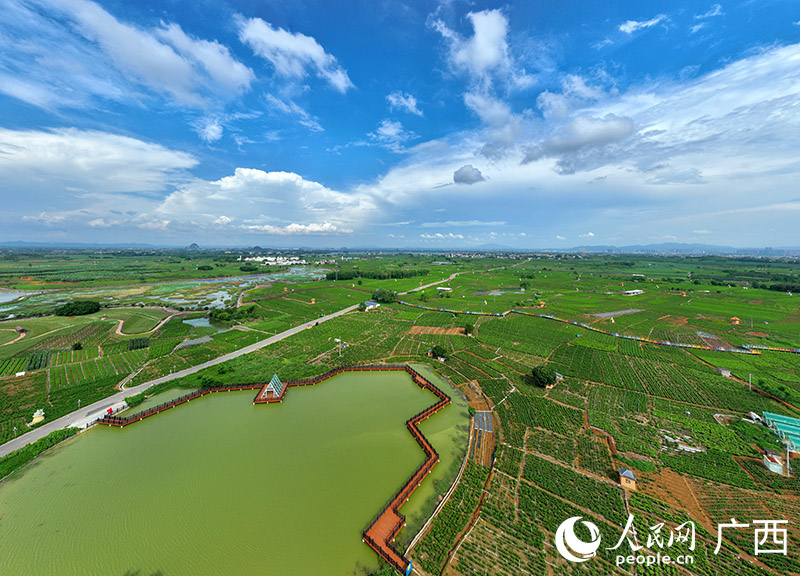
Photo shows the Chinese Jasmine Garden, also a popular scenic area, located in Shijing village, Hengzhou city, south China's Guangxi Zhuang Autonomous Region. (People's Daily Online/Fu Huazhou)

Photo shows the Chinese Jasmine Garden, also a popular scenic area, located in Shijing village, Hengzhou city, south China's Guangxi Zhuang Autonomous Region. (People's Daily Online/Fu Huazhou)
Photos
Related Stories
Copyright © 2022 People's Daily Online. All Rights Reserved.






